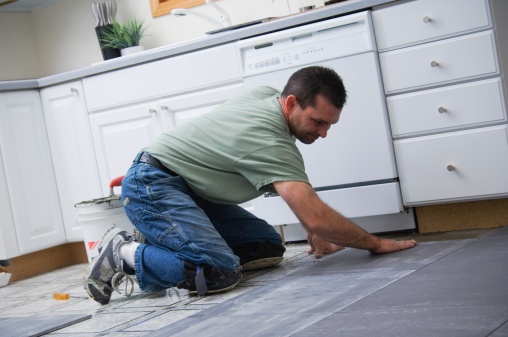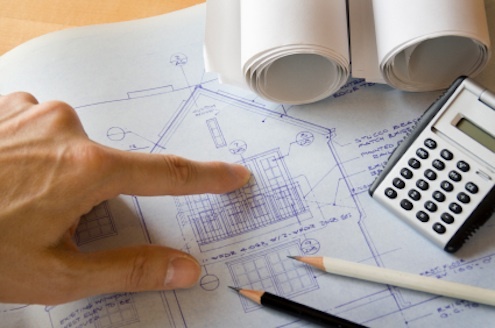How to Finance Home Improvements
"Smart renovations not only improve the utility and value of your property, they can also protect the value in a declining market or make it easier to sell." - Scott McGillivray
Why Renovate Your Property?

There are a number of reasons to renovate a property, including:
- to increase it's utility hence enjoyment for you,
- to make it easier to sell, or
- to retain or increase its value.
Increasingly, Canadians prefer to relax, socialize and work at home. Renovation offers tremendous opportunities to create a home that reflects the way you like to live and contributes to your enjoyment of life, whether utility or comfort features, energy-saving modifications, or even to achieve a grander sustainable living objective.
Secondly, many people undertake renovations to make their property more attractive to sell. Carefully selected and dependent on market conditions, these renovations can make sense whether in speeding the sale of a property or fetching a better price.
The third reason to renovate a property is to retain or increase its value. Property values increase in two ways:
- Market Appreciation over time, appreciation that is largely out of your control, and
- "Forced Appreciation," a term that describes the value you can create or add to your property through "smart improvements", including quality upgrades, updates and maintenance.
Rather than purchasing a new built home, many of our clients are purchasing an existing home in a desirable location, and then renovating it to their style. Or they already own the property, and want to modernize it. This could entail something as simple as adding hardwood floors, or as detailed as complete basement renovations.
Smart Renovations
Earlier we talked about "smart renovations." Lenders can finance home improvements based on the "as-improved" value of the renovations, which is different from and not necessarily the cost of renovations. This is an extremely important point to understand. Not all renovations result in an increase in the value of the property. Here is a Top 5 Reno List for Return on Investment.
Energy upgrades: Whether you’re thinking about new energy-efficient windows, a new furnace, or solar panels on your roof, energy upgrades are a hot trend in home building and renovations, and typically bring with them at least a 50 to 75 percent return upon resale not to mention years of energy cost savings.
Home Renovation Financing Options

Depending on the scale of your project, there are a number of ways to finance your home improvements. For simplicity, let's divide the expenditures into smaller and larger projects.
For smaller projects, you might want to consider paying cash or "personal" borrowing, meaning a home improvement loans and revolving credit that you get at a retail bank (TD, Scotia, RBC, etc.) and that are not tied or "secured" to any of your assets.Trick is to pay these loans back quickly. If you can't pay them back quickly, consider your projects to be larger projects!
For larger projects, you might want to consider borrowing based on the existing equity in your home, or the equity you can create doing smart renovations. In most cases where you already own the home, the maximum funds available are generally 80% of the appraised value of the property less the amount left to pay on your existing mortgage. Initial set-up costs may include legal and appraisal fees. Here are some options:
- HELOC or Home Equity Line of Credit - works much like a personal line of credit, typically at prime rate +, and you can borrow the money up to your limit whenever you want and repay as you wish. Requires discipline to repay the balance.
- Mortgage Add-On (2nd mortgage) - this is a home equity loan on top of your existing mortgage. You must repay this loan in addition to the required payments on the original mortgage. More expensive than HELOC, but offers up front cash and a structured repayment plan.
- Refinance with Equity-Take-Out - this means you replace your existing mortgage with a new mortgage up to 80% of the property's appraised value. You end up with a lump sum of cash at the beginning of your project, and spend it as you see fit.
- Refinance Plus Improvements - this is a way to get 80% lending based on the NEW "as-improved" value of your property, not the existing value as in the above methods. This means access to more cash for extensive renovations, but comes with some strings attached, namely you get the money as the improvements are completed and inspected, not before. At mortgage refinance / renewal time is a great opportunity to consider this.
- Purchase Plus Improvements - when you are buying a home, this is a way to get money in excess of the purchase price to be used for specific renovations as agreed to as part of the purchase mortgage financing. The extra funds available are based on the NEW "as-improved" estimated value of your property, in excess of the original purchase price. This means access to cash for extensive renovations, such as new roof, new kitchen, new bath, new windows and doors, etc. Again, you get the money as the improvements are completed and inspected, not before, and you can accomplish all this with as little as 5% down payment.
In items 4 & 5, the trick to a home improvement mortgage is creating "as-improved" value that exceeds the cost of the renovations is to make quality and consistent renovations throughout the house, which compliment each other and increase the value of the whole house in the eyes of prospective buyers, as determined in advance by a licensed property appraiser. Let's look at these last two in more detail.
Purchase Plus Improvements
+
Refinance Plus Improvements
Certain lenders allow us, as mortgage brokers, to help you obtain financing that provides for the purchase or refinance of the residence, plus additional funds for the “improvements”. Details are as follows:
- The client (you) must provide in advance detailed quotes for the project, clearly outlining the scope of the work to be done and the cost.
- get quotes from legitimate, reputable contractors, and stores for the work involved.
- ensure the quotes are detailed, with all actions and materials clearly described.
- if construction permits are required, make sure you know that you can obtain them.
- we, as mortgage brokers, use this information to support your financing request and recap the work involved in our loan submission notes to the lender to help them understand your project.
- Upon submission of a mortgage financing request, the lender will review your project and then determine how much the renovations improve the value of the home (not the cost of the improvement). This can be done in a number of ways:
- If the work can be easily confirmed by inspection after the fact, they might simply approve a reimbursement of, say, 80% for a kitchen renovation quote without the need for an upfront appraisal.
- For more complex projects, the lender may require an upfront appraisal of the property to determine the value "as-is" and "as-improved" based on your detailed quotes. The difference is the "improvement value."
- Upon mortgage approval, the lender advances the "value" of the improvements (less the borrower's required percentage) to your lawyer's 'trust account' to remain there until the necessary work is completed, inspected, and lender authorizes your lawyer to release these "hold back funds" to you. Multiple advances (or draws) may be available for larger projects, but generally there is only one advance at the end of the project.
- Very important to note is that you the borrower must complete the improvement on a timely basis before you receive the reimbursement. This means either you can cover the improvement costs yourself, or the contractor / store will carry the costs until after completion and inspection.
- Generally, there is a 60-90 day window to complete the improvements.
- In addition to the improvement funds, the lender also advances to your lawyer the approved mortgage amount required to purchase the home "as-is" or to replace the current mortgage in the case of a refinance, just in case you were wondering.
Example of a Refinance Plus Improvements
Mike and Joyce have decided to start a family, and Joyce - now pregnant - will be leaving the workforce soon. As both want Joyce to stay home and raise the kids, they decide to create an "income suite" in the basement of their Calgary walk-out bungalow and use the rent from the tenants to help augment their household income.

They owe about $400K on their $500K property, so have about 20% equity in their home as-is. However, mortgage rules only permit them to borrow on home equity in excess of 20%, so it appears they have nothing available for renovations, or so they think until their mortgage broker tells them about the Refinance Plus Improvement program, which permits them to borrow based on the "as-improved" value of the home (after the value created by the renovation, that is!)
Working with guidance from their mortgage broker, they contact a general contractor experienced with income suites and Calgary home renovations in general, who works out a detailed quote for $40K. The $40K includes adding a new (lower) kitchen, a bathroom renovation, fire and sound separation from the main floor, disconnection from the furnace as the suite's heat source (they will use the in-floor heating instead), enlargement of 2 lower bedroom windows for fire egress, and new flooring.
Next, an appraisal is ordered to determine the value of the home "as-improved." With quotes and specs in-hand, the appraiser reviews the property and similar properties that have recently sold, and pegs the "as-improved" market value of the home at $570K. That's great, as they can borrow up to $456K (80% of the appraised value), and the owe $400K on their existing mortgage, so that leaves $56K for the renovations - perfect! (but there's a string ....)
The mortgage is approved based on the $570K value. On the mortgage funding date, the lender will advance $456,000 (80% of $570K) to the client's lawyer with instructions to pay off the existing mortgage of $400K, and hold-back $56K until the improvements are complete.
Here's the string. The contractor requires a 25% deposit before he will start, with the balance due on completion. Mike and Joyce don't really have the required $10K (25%) deposit, but they hit up the "Bank of Mom & Dad" to spot them the money as and when required by the contractor until their project is complete, inspected, and the lawyer releases the hold-back funds.
A Purchase Plus Improvements is very similar to the above, except that as the home is purchased, quotes are obtained, and the clients only needs to have 5% equity in the property. All the other steps would be the same. See a Purchase+ example on our website, and more information on this topic.
If you have questions on how to finance a home improvement project, we'd love to hear from you. Please contact us.
By the way, "smart renovations" are any renovations that add more in value then they cost to perform. Ask us for ideas. Kitchens and bathrooms are good examples. Stay tuned for our next blog with examples of home renovations Edmonton and bathroom renovations Edmonton.


.jpg)